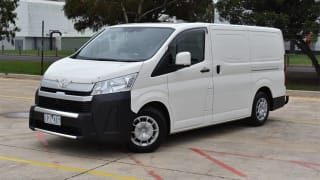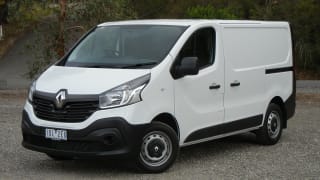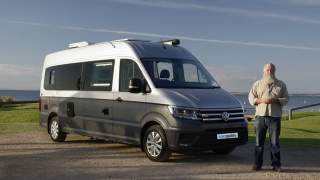Our test vehicle is the Transit Custom 340L LWB DCiV which translates to 3400kg GVM, long wheelbase and Dual Cab in Van. It’s available only with a 2.0 litre EcoBlue four-cylinder turbo-diesel engine and a choice of six-speed manual, or six-speed torque converter automatic transmission like our test vehicle, for a list price of $49,990.
So, it’s more expensive than Hyundai’s iLoad Crew Cab ($44,890), Toyota’s HiAce Crew Van ($47,140) and VW’s Transporter TDI 340 LWB Crew Van ($47,990), but undercuts European competitors including the Renault Trafic Crew Lifestyle ($52,490) and Mercedes-Benz Vito Crew Van ($57,650).
For that sub-$50K pricing you get 16-inch steel wheels with 215/65 R16 tyres and matching spare, cloth seat trim, 10-way adjustable driver’s seat, dual front passenger seats (all heated), a delightful leather-wrapped steering wheel with tilt and reach adjustment, three 12-volt outlets, two USB ports and a single 230v (150W) power inverter to pluck just a few items from the features list.

There’s also a four-speaker multimedia system with 8.0-inch touchscreen, steering wheel controls and SYNC3 connectivity with Applink, Apple CarPlay and Android Auto, plus DAB+ digital radio with optional sat-nav.
Ford offers numerous genuine accessories plus some factory options, including SVO or Prestige paint (like the Moondust Silver metallic on our test vehicle) or a single-lift tailgate in preference to the standard rear barn doors.




















